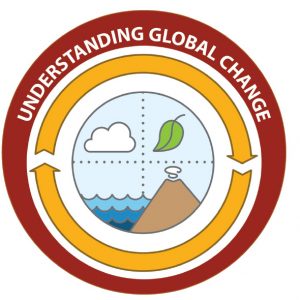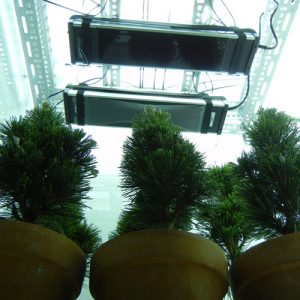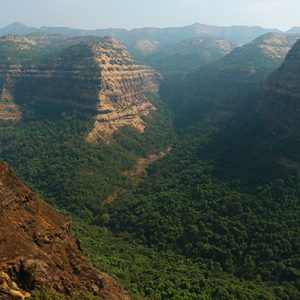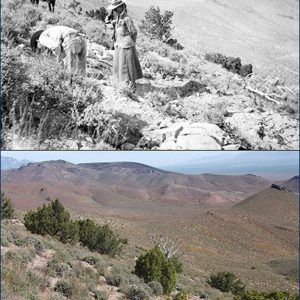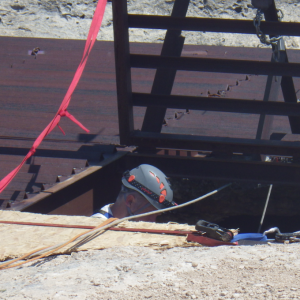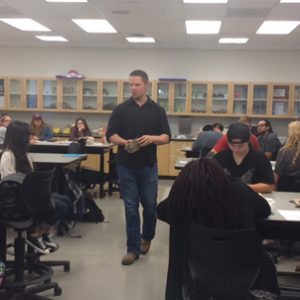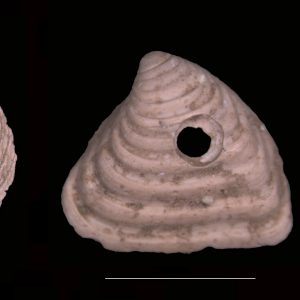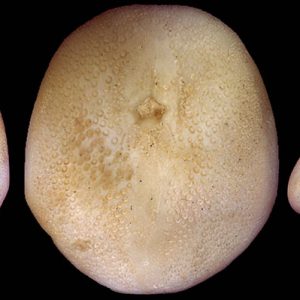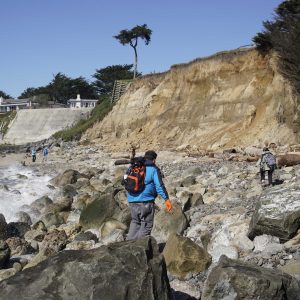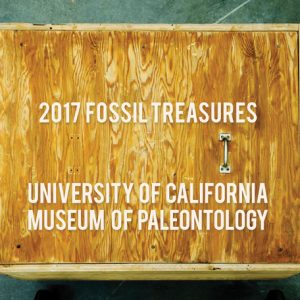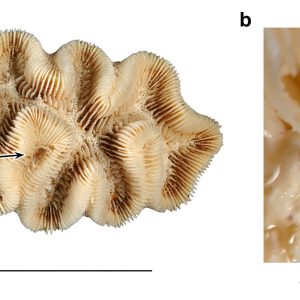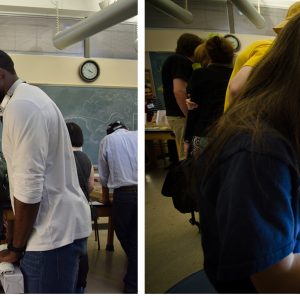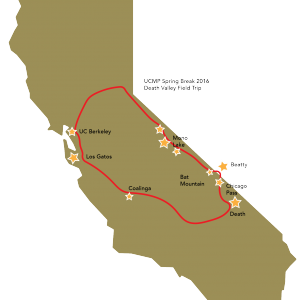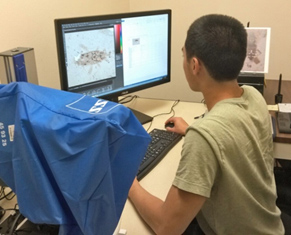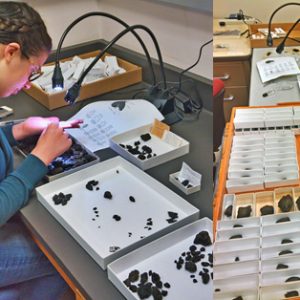Understanding Global Change FREE Workshop and Materials for High School Science Educators April 28 & 29, 2018, 10:00am – 4:00pm Valley Life Sciences Hall, UC Berkeley Space is limited! Registration closes April 20, 2018 or earlier if fills. To register, please contact Jessica Bean jrbean@berkeley.edu. The University of California Museum of Paleontology is hosting a teacher professional development program to support the teaching of the global change topics. We are recruiting 15 teacher … [Read more...] about Understanding Global Change Workshop, April 28-29
Latest News
UCMP paleobiologists shed new light on ozone shield failure, forest sterility, and mass extinction
Members of the Looy Lab - Jeff Benca, Ivo Duijnstee, and Cindy Looy - co-authored a paper in the journal Science Advances. It details exciting new findings from experimental research on the effects on UV-B induced stresses on forest decline during the end-Permian extinction. Read more in the University press release. View the video: https://youtu.be/bz9je0Me4AU … [Read more...] about UCMP paleobiologists shed new light on ozone shield failure, forest sterility, and mass extinction
A new destination for disaster enthusiasts
The Cretaceous-Paleogene (K-Pg or K-T) mass extinction — the event in which the non-avian dinosaurs, along with about 70% of all species in the fossil record went extinct — was probably caused by the Chicxulub meteor impact in Yucatán, México. However, scientists have long wondered about the massive volcanic eruptions that were occurring in northwestern India at about the same time, the Deccan Traps. Volcanism is the likely cause of several prior mass extinctions, with no convincing evidence for … [Read more...] about A new destination for disaster enthusiasts
Exploring Annie Alexander’s Saurian Expedition of 1905
In 1905 UCMP benefactress Annie Alexander financed and took part in an expedition to the West Humboldt Mountains of Nevada to collect vertebrate fossils in the Triassic limestones. The crew came home with portions of some 25 ichthyosaur skeletons. Alexander put together a scrapbook containing her chronicle of the trip and many photographs; the scrapbook was given to UCMP following Alexander’s death in 1950 and is one of the most treasured items in the museum’s archives. Up until now, the … [Read more...] about Exploring Annie Alexander’s Saurian Expedition of 1905
A Pleistocene pit-stop: the Barnosky lab excavates Natural Trap Cave, Wyoming
You might think that an 85-foot-deep hole where a bunch of horses, wolves, camels, elephants, and plenty of other animals accidentally plummeted to their death over tens of thousands of years would have enough red flags to make going into it yourself sound like a bad idea. But what if these unfortunate critters could tell you what their life was like and how they died? What if they could give you a warning about their death in a warming world after the last ice age and what it means for life in … [Read more...] about A Pleistocene pit-stop: the Barnosky lab excavates Natural Trap Cave, Wyoming
Guest lecturing at Los Medanos Community College
Roughly 10 million students attend American community colleges each academic year, accounting for more than a third of all American undergraduates. Relative to their peers at four-year institutions, community college students are much more likely to come from lower income households, much more likely to be members of an underrepresented minority group, and much more likely to be a first-generation college student. I was lucky enough to spend three years as a faculty member of a Denver-area … [Read more...] about Guest lecturing at Los Medanos Community College
What do traces of predators tell about ancient marine ecosystems?
Reconstructing biotic interactions is crucial to understand the functioning and evolution of ecosystems through time, but this is notoriously difficult. Competition in deep time cannot be readily seen except for overgrowth of one organism by another under the assumption that both were alive at the same time. Parasites usually do not preserve because they are soft-bodied and tend to be small so that they are not spotted easily. The most abundant evidence of biotic interactions comes from the … [Read more...] about What do traces of predators tell about ancient marine ecosystems?
Understanding the evolutionary history of the cassiduloid echinoids
It is widely recognized that major groups evolve at different rates, in their own evolutionary trajectories. Some evolve fast and are very diversified while others evolve slowly and may never experience an explosion of diversity throughout their trajectory. One of my research interests is understanding the pace of morphological evolution through time, and the organisms selected to investigate this topic are the irregular echinoids. Commonly known irregular echinoids include the sand dollars … [Read more...] about Understanding the evolutionary history of the cassiduloid echinoids
Surprising new finds in museum specimens
I am very grateful to have received a UCMP Graduate Student Research Award via the Barnosky Fund in April 2016. I used these funds to collect pilot data from major natural history museum collections around the country for my dissertation research. My research investigates responses in fossil animal communities to climate change over long time intervals. We need historical data about the affects of climate change on animals in the past in order to anticipate these affects on animals in the … [Read more...] about Surprising new finds in museum specimens
A Hitchhiker’s Guide to the Pleistocene Sea
Using Fossil Whale Barnacles to Reconstruct Prehistoric Whale Migrations Baleen whales, as we know them today, lead lives that are largely defined by their annual migrations. Every year, whales spend their winters breeding and reproducing in tropical waters, then travel to poleward feeding areas each summer. For North Pacific humpback whales, winter breeding areas cluster around Central America and Hawaii, and then they travel to the Gulf of Alaska to feed in the summer (small numbers also … [Read more...] about A Hitchhiker’s Guide to the Pleistocene Sea
Bringing the field to our users through EPICC’s Virtual Field Experiences
Ever wonder where fossils from the UCMP were collected or want to know more about the geological setting of UCMP field areas? Curious about why an area looks the way it does? These questions and others are driving the development of Virtual Field Experiences (VFEs) associated with the EPICC project (Eastern Pacific Invertebrate Communities of the Cenozoic, http://epicc.berkeley.edu). Together with EPICC partners from the Paleontological Research Institution (PRI), UCMP Assistant Director Lisa … [Read more...] about Bringing the field to our users through EPICC’s Virtual Field Experiences
A Successful Short Course
On March 4th the popular UCMP annual short course featured dinosaurs this year: "A new look at old bones: Insights into dinosaur growth, development and diversity." The short course is an ideal way to connect public audiences, particularly teachers and science educators, with current research in paleontology and Earth history. Past short courses have had regional environmental themes (SF Bay ecosystems) or focused on patterns of evolution and extinction. After Lisa White kicked off the course … [Read more...] about A Successful Short Course
Support UCMP’s See-Through Dinosaur Skull Project
Through a crowdfunding initiative with UC Berkeley, the UCMP would like your support in creating the first ever "see-through" dinosaur skull! UCMP is a leader in paleontological research and with your support of this project, museum paleontologists will further explore how dinosaur skulls grow and develop as they change size and shape. With this crowdfunding project, UCMP hopes to raise enough funds to CT scan, volume render and 3D print the first ever see-through dinosaur skull, starting with … [Read more...] about Support UCMP’s See-Through Dinosaur Skull Project
2017 Fossil Treasures Calendar Available Now!
Revealing the collections at Regatta The 2017 Fossil Treasures Calendar is a bit of a 'behind-the-scenes' look at the work done at UCMP and celebrates some impressive fossil specimens we hold at the Regatta Facility in Richmond, CA. We have both fossils large in size and large in number and featured in this calendar are the large antlers from the giant elk, hundreds of vials of microfossils and even dinosaur fossils formerly on display at Cal Academy, namely the legs of the Allosaurus. So get … [Read more...] about 2017 Fossil Treasures Calendar Available Now!
Cryptic caves and paleoecology of crustaceans in Cenozoic coral reefs
Just some months ago on a Saturday in July, I had the pleasure of snorkeling above the only coral reefs in the continental Unites States. These reefs in southern Florida still harbor many species of corals, fish, and other animals including crustaceans such as crabs, shrimps, and lobsters. These decapods are difficult to spot while snorkeling, but that does not mean they are not there. Their usually small size in this landscape of incredibly variable topography ensure they are able to hide … [Read more...] about Cryptic caves and paleoecology of crustaceans in Cenozoic coral reefs
Cal Day 2016
The 2016 Cal Day, held on April 16, 2016, was my first time experiencing Cal Day and I was also the one planning it. Cue scary music! Thanks to the UCMP community for pitching in their time and efforts, it went off without a hitch and was fun experience all around. As a newer member of the UCMP community, I only knew about CalDay through photos and the well-documented newsletter postings by my predecessor Dave Smith. Annually on Calday, the campus opens up to the public and shares all … [Read more...] about Cal Day 2016
A photo essay: Death Valley Field Trip, Spring Break 2016
Learning in the Field The 2016 UCMP Spring Field Trip was my first foray into exploring the world of paleontology in the field. Curators/professors Seth Finnegan and Cindy Looy brought 10 graduate students, postdocs, and a few beguiled tag-alongs like myself to various localities throughout central and southern California and Nevada. Field trips like these are important learning opportunities for future paleontologists and geologists, and a way to use practical skills in the field and see … [Read more...] about A photo essay: Death Valley Field Trip, Spring Break 2016
Hiep Nguyen’s UCMP undergraduate research experience: “Scentless in Nevada”
This past year, I’ve been working with UCMP Senior Museum Scientist Diane M. Erwin to identify a new fossil species of scentless plant bug (family Rhopalidae) from a Miocene lakebed deposit in Stewart Valley, Nevada. The study developed as a result of my participation as an Undergraduate Research Apprentice (URAP) in UC Berkeley’s Fossil Insect Digitization PEN project (BFIP) funded by the National Science Foundation. The BFIP project is part of the Fossil Insect Collaborative Thematic … [Read more...] about Hiep Nguyen’s UCMP undergraduate research experience: “Scentless in Nevada”
Terraces through time: Reconstructing fossil beaches in southern California
San Nicolas Island is a strange, far-away place very familiar to a surprising number of Californians. Thanks to Scott O'Dell's Island of the Blue Dolphins, this island — the most remote of California's eight Channel Islands — and it's native Nicoleño people have been engrained into the imaginations of many elementary school children. My own mind was captivated by this story in the fourth grade when I had the opportunity to conduct fieldwork on San Nicolas Island with Daniel Muhs (U.S. Geological … [Read more...] about Terraces through time: Reconstructing fossil beaches in southern California
Meschelle Thatcher’s UCMP undergraduate research experience: Beetles in Brea!
As an English major, I didn’t really know what to expect when I first started my URAP (Undergraduate Research Apprenticeship Program) appointment for the UC Museum of Paleontology Fossil Insect PEN (Partner to an Existing Network) funded by the National Science Foundation. All I knew was that I’d be handling fossils, and that struck the scientific chord in my imagination in perfect harmony. The Pleistocene Rancho La Brea tar pits in southern California are best known for their extinct exotic … [Read more...] about Meschelle Thatcher’s UCMP undergraduate research experience: Beetles in Brea!
